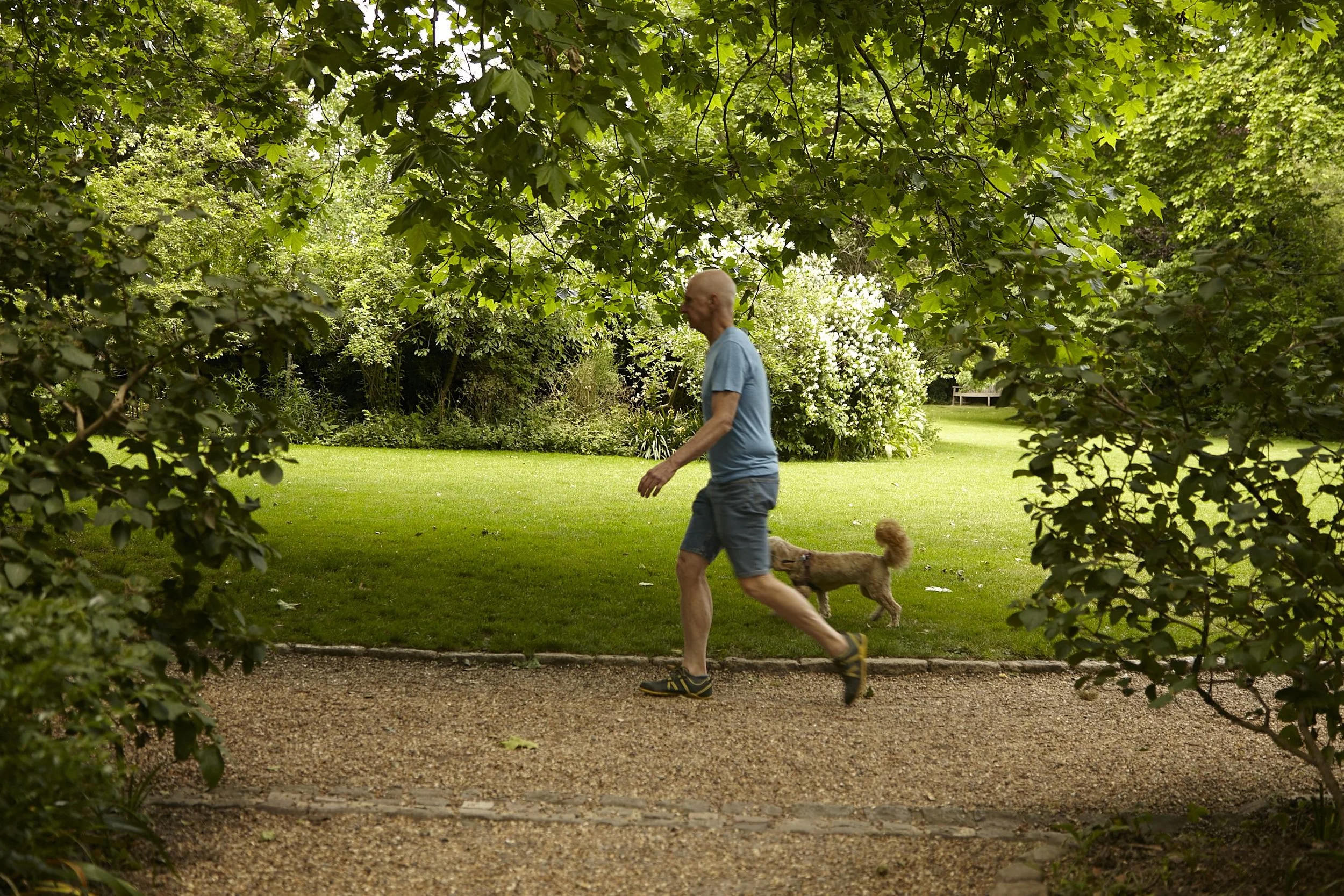Just Walking the Dog Isn’t Enough
Your Other “Best Friend” Is a Zone 2 Activity
As you can guess, I enjoy chatting with people of all ages about health, nutrition, and the latest ideas around staying fit and healthy as we age. These conversations often lead to new ideas for the people I’m chatting with as well as new avenues of research for me. When I ask people what they do for exercise, sometimes they are taken aback, which indicates that exercise is not really a part of their lives. Often they will reply with comments like, “Oh, I walk my dog every day.” These types of replies tell me that, unfortunately, they don’t truly appreciate the importance of exercise—and the very direct benefit it can have on their lives. I know many older people who don’t exercise regularly but “stay active” by gardening or playing golf. Clearly, these types of activities are enjoyable ways to spend time. However, they do not deliver the same health benefits and lowered risk of disease as a sustained Zone 2 activity, done on a regular basis.
I know I beat on this drum a lot. But along with a diet comprised mostly of fresh vegetables and healthy protein, regular Zone 2 activity is your best friend in the challenge of living well into your later years. To refresh your memory, Zone 2 is elevated activity, where you are working out at about 2/3 of your maximum heart rate. The sustained elevated heart rate is key to getting Zone 2 benefits. It’s helpful to remember that Zone 2 is considered a conversational pace because you can still speak in full sentences without being out of breath.
Example Zone 2 activities include walking fast, running, hiking, challenging bike rides, rowing, and swimming—any activity that enables you to sustain that elevated heart rate and conversational pace for an extended amount of time. Whether it is for 30 minutes or 2 hours, keeping your blood flowing and your heart pumping at this level brings benefits that regular movement doesn’t. Here are some of the benefits you are missing if your only activity is casually walking the dog or playing golf.
Burning Fat
Zone 2 is the most efficient speed for burning fat. In addition to helping to control weight and keep your fat levels lower, getting your body used to burning fat as a fuel source is a much more efficient way for it to function. This is a compelling and observable benefit of Zone 2. After all, who doesn’t want to burn fat?
Increasing Your Aerobic Base, Strengthening Your Heart and Lungs
Your heart, lungs, blood vessels, and organs all get a low-level, sustained workout. It’s not aggressive enough to release adrenalin and other stress hormones, but it’s enough to stimulate strengthening and increased functions. Your resting heart rate will go down over time, a key indicator that your heart is stronger, your lungs are able to function more efficiently, and you can move and do things with less effort.
Promoting Mitochondrial Growth, Flexibility, and Efficiency
Your mitochondria are the energy centers within each cell. They can burn fats or carbohydrates. Zone 2 makes them more efficient at burning both as well as increasing the number of these “powerhouses of the cell.” And because the energy expenditure is not too high in a Zone 2 activity, your cells can process waste and spend fuel more efficiently. This cellular flexibility is also a key regulator of insulin sensitivity, which Zone 2 also promotes. While this benefit of Zone 2 is not as observable as the “burning fat” benefit, it’s incredibly important for our bodies at a cellular level.
Promoting Recovery
Zone 2 doesn’t take you past your lactic acid threshold like High Intensity Interval Training (HIIT) exercises or intensive strength training workouts. Our bodies release lactic acid when they need to use carbohydrates as fuel, not fat. The result is easier recovery (or no recovery) from your Zone 2 activity.
Releasing Endorphins
I find that intense forms of exercise (which have their place, such as HIIT) release endorphins quickly, and the effect of these “feel-good hormones” doesn’t last as long. (Yes, endorphins really are known as the “feel-good hormones”!) On the other hand, I find that my endorphin levels after a long Zone 2 workout last much longer without the added complications of stiff muscles and extra recovery time.
Those are just some of the benefits you won’t get from walking the dog. And while there is room for all sorts of body work in any health regime, from gentle meditation to HIIT workouts, Zone 2 provides the essential foundation of movement health. It’s no accident that this form of movement coincides with how we spent most of our time for the thousands of years that our ancestors were hunter-gatherers.
By the way, it’s easy to turn your dog walk into a Zone 2 dog walk, which offers benefits for you and your dog. Unless I am on a recovery day, in which case a gentle stroll is all I want to do, when I walk our dog In Hyde Park, I walk at a Zone 2 pace. Our dog, Lola, is off the leash and either gallops ahead to chase a squirrel or stops to sniff and runs to catch up. When she is by my side, her gait is a steady trot, her own Zone 2 pace.When I have her on a leash, I don’t pause to let her sniff every bush, tree, and fire hydrant we pass—we keep walking, and we keep up our pace. Lola is 12 years old and has the energy of a puppy. This stuff works for dogs as well as humans!
